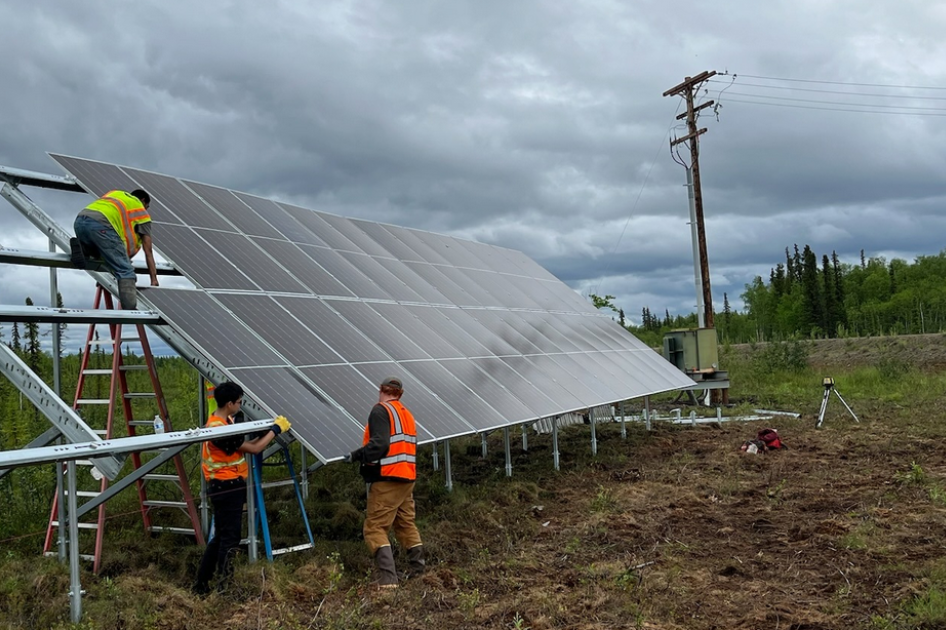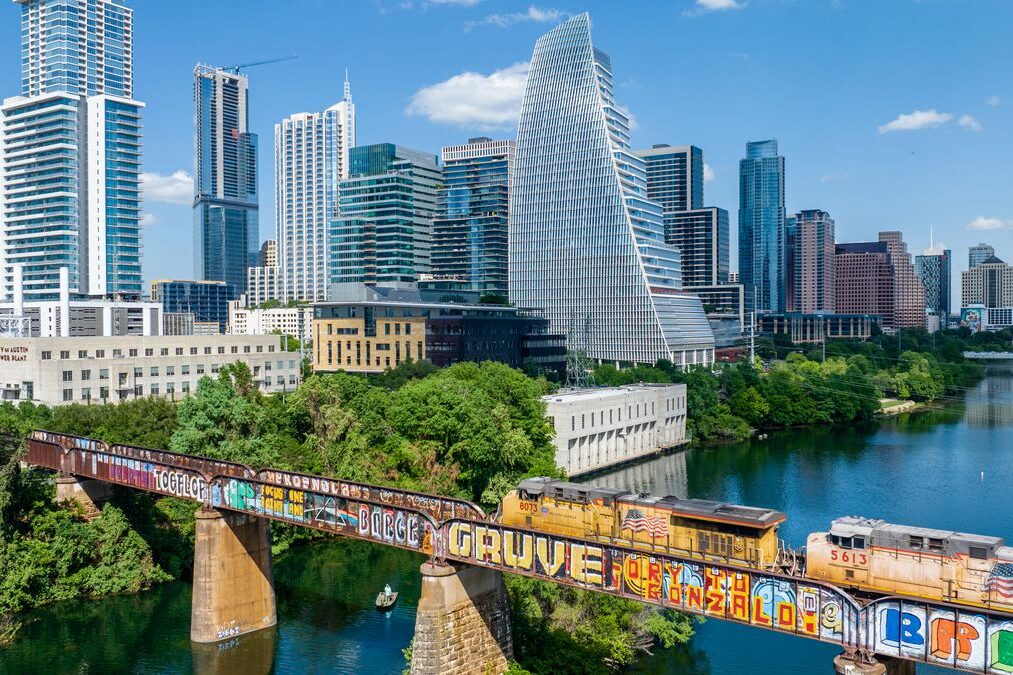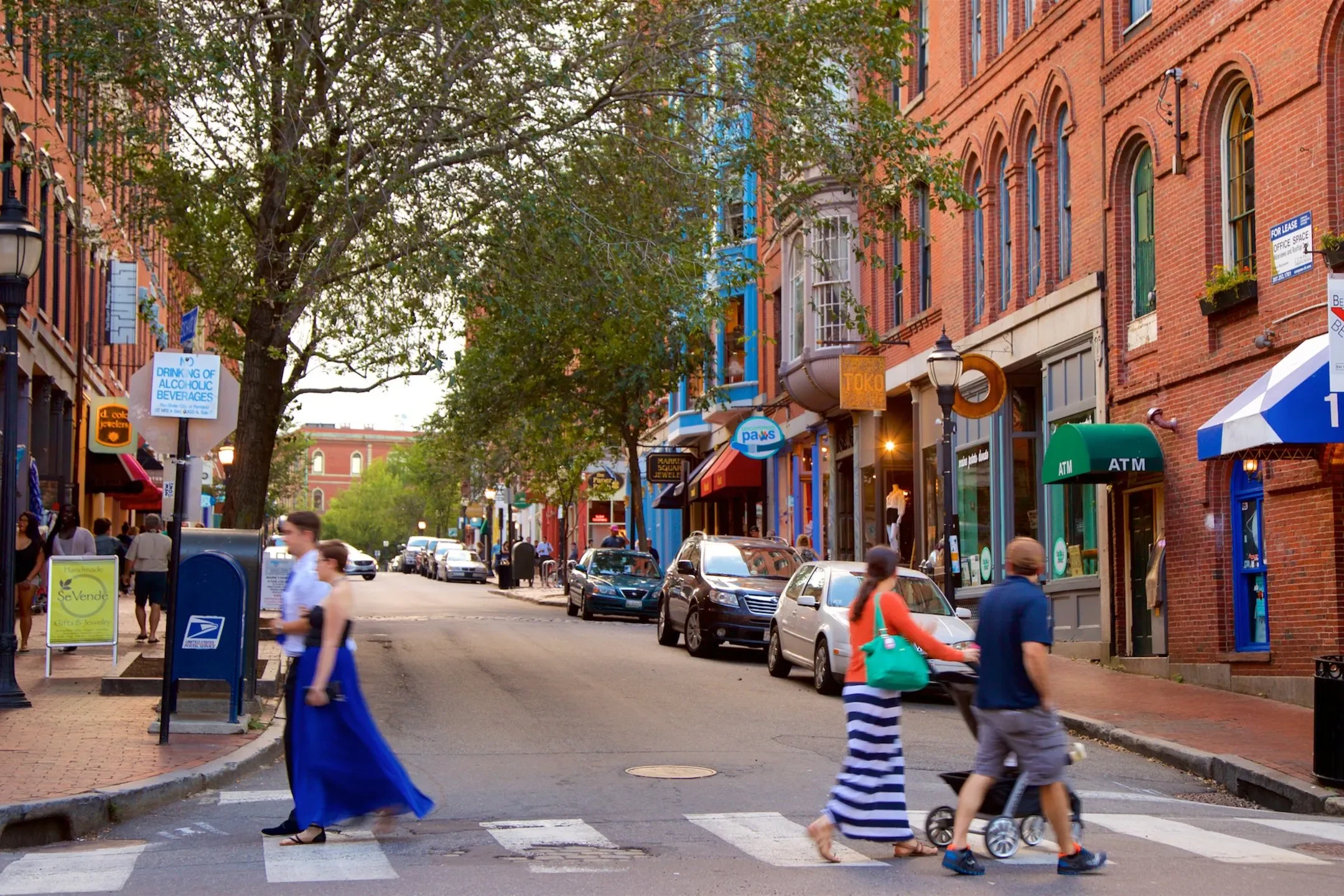1. Galena, Alaska

Galena used to depend almost entirely on diesel fuel, making energy costs skyrocket for its small population. After a devastating flood in 2013, the town took charge of its future by installing a large solar array and using biomass heating systems powered by local wood. The community embraced clean energy to cut diesel use by over 100,000 gallons a year while reducing reliance on supply chains.
Experts consider Galena a standout model for rural energy transition. The town’s success came from local leadership working with nonprofits and government grants to create a realistic, climate-adapted plan. Galena teaches that even isolated communities can shift to sustainable systems through collaboration and practical innovation. With vocational training programs also introduced, they are building both green jobs and energy independence. It’s proof that small towns can create outsized impact when the community is fully involved from the start.
2. Greensburg, Kansas
When a massive tornado destroyed Greensburg in 2007, residents saw an opportunity to rebuild with sustainability at the center. The town made green building mandatory, installed wind turbines, and prioritized energy-efficient infrastructure in every new home and public building. Greensburg quickly became a leader in LEED-certified buildings and earned national recognition for its transformation from rubble to renewable resilience in just a few years.
Sustainability professionals often point to Greensburg as an example of turning crisis into innovation. The community’s commitment to renewable energy, local food systems, and storm-resistant structures shows how environmental priorities can align with long-term recovery. This rural Kansas town didn’t just bounce back; it redefined what rebuilding can look like. Greensburg teaches us that with vision, collaboration, and bold planning, even small towns can become global examples of climate resilience and responsible urban development that puts people and planet first.
3. Davis, California
Davis features the iconic Village Homes development, built between the 1970s and 1980s. Its homes are oriented north‑south for passive solar heating, and streets run east‑west to optimize sunlight. Bioswales collect stormwater to irrigate shared orchards, vineyards and edible gardens without treated water. Residents enjoy lower energy usage and stronger neighborhood ties. The community design offers both environmental and social benefits by blending efficient systems with shared open space
Planning experts value Davis as a living laboratory in sustainability. Village Homes demonstrates that coordinating architecture, landscape and land use can reduce carbon footprints and foster community connection. The model shows how ecological design can be economically viable and socially rich. Davis teaches that intentional planning, rooted in local ecology and neighborly culture, creates lasting impact. It invites designers and residents alike to imagine housing that supports both planet and people. The results here still inspire planners half a century later.
4. Northampton, Massachusetts
Northampton adopted a forward‑looking sustainability plan that links community visioning with measurable climate goals. The city commits to net zero carbon for municipal buildings by 2030 and for the full community by 2050. Green building standards apply to public construction while stormwater gardens and transit enhancements support resilient and inclusive growth.
Urban planners praise Northampton for aligning citizen input with municipal strategy. Its plan integrates affordable housing, equitable mobility and nature‑based infrastructure. Pulaski Park’s stormwater features and pedestrian‑friendly streets exemplify the approach. This model shows how a small city can pursue deep climate action without sacrificing livability. Northampton teaches that sustainability thrives when residents shape and demand meaningful standards.
5. Cobb Hill, Vermont
Cobb Hill is a cohousing community on 260 acres in Hartland. It was built with 23 energy‑efficient homes clustered near agriculture and forest. Passive solar orientation, triple‑glazed windows, solar water heating and composting toilets are standard. Central wood‑gasifying furnaces warm all homes in winter using local wood. Residents manage a working farm producing cheese, maple syrup, mushrooms, dairy and vegetables for local markets and community consumption.
Ecological living advocates see Cobb Hill as an example of combining shared social values with sustainable infrastructure. Members participate in community governance, shared meals and workdays. This fosters deep interpersonal bonds and environmental responsibility. Cobb Hill shows how local food, green construction and cooperative routines can reduce footprint and enrich daily life. It teaches that meaningful sustainability encompasses ecology, economy and relationships. This intentional living model offers lessons for others looking to experiment with community‑scale green practices.
6. Portland, Oregon
Portland has long been seen as a trailblazer in urban sustainability. It was the first US city to adopt a climate action plan in 1993 and continues to lead with policies that prioritize biking, public transportation, and dense, walkable neighborhoods. In recent years, Portland launched a massive climate justice initiative, investing in renewable energy, housing upgrades, and green job creation in underserved communities.
Urban designers often point to Portland as a working model of progressive city planning. Its success lies in integrating equity with sustainability, ensuring that eco-friendly solutions also meet social needs. Portland teaches that green cities thrive when infrastructure, policy, and people align. By combining innovation with inclusive policymaking, the city proves that climate action doesn’t have to leave anyone behind. Its approach offers a meaningful roadmap for others to create lasting, inclusive environmental impact.
7. Austin, Texas

Austin has emerged as a tech-savvy green city that’s using innovation to improve sustainability. It boasts one of the largest municipal solar programs in the country and is investing heavily in electric vehicle infrastructure. The city’s Climate Equity Plan outlines goals for net-zero emissions by 2040, with a strong focus on energy justice for marginalized communities and improved public transit options.
Sustainability strategists recognize Austin for weaving climate initiatives into its broader city identity. With startup culture, civic leadership and community advocacy working together, Austin demonstrates how tech cities can be drivers of environmental progress. It teaches that innovation and equity are not mutually exclusive, and that real sustainability comes from systems designed to uplift all residents. Austin’s leadership shows how green technology can be harnessed to serve both the environment and social good.
8. San Francisco, California
San Francisco is one of the most ambitious cities when it comes to zero waste goals and carbon reduction. Its mandatory composting and recycling programs reach nearly all households and businesses. The city’s CleanPowerSF initiative brings 100 percent renewable energy to tens of thousands of customers, helping reduce emissions and keep costs down. Future goals include a fully electric public transit fleet and net-zero new construction.
Experts value San Francisco’s all-in approach to environmental responsibility. Rather than relying on a single solution, the city advances layered policies that include green energy, waste diversion, transportation reform, and building performance. San Francisco teaches that holistic thinking makes the difference when tackling urban sustainability. It also proves that bold goals, when paired with enforcement and public buy-in, can lead to real and measurable impact for the planet and for residents.
9. Minneapolis, Minnesota
Minneapolis blends smart land-use planning with extensive green space and alternative transportation. Nearly all residents live within a ten-minute walk of a park. Protected bike lanes span the city, and its Green Zones initiative helps frontline neighborhoods access clean energy, fresh food, and air-quality improvements. The city’s Climate Equity Plan emphasizes partnerships with community organizations to ensure long-term change.
Urban sustainability researchers highlight Minneapolis for how it combines environmental strategies with social inclusion. It’s not just about building green infrastructure, but also about empowering residents to co-create solutions that benefit everyone. Minneapolis teaches us that climate progress happens when equity is foundational, not optional. Its success shows how midsized cities can make green living a shared, lived experience that reflects community needs and values.
10. Denver, Colorado
Denver is gaining attention for its comprehensive approach to sustainability through the “Denver Moves” and “Green Buildings Ordinance” initiatives. These focus on walkability, green space access, and energy-efficient construction. The city has expanded bike lanes, introduced bus rapid transit, and launched incentives for energy upgrades in homes and commercial buildings. Denver’s Office of Climate Action leads coordinated efforts across neighborhoods to reduce emissions and improve public health.
City planners appreciate how Denver links climate goals with urban development. The city offers a practical example of using transportation and land-use policies to shape lower-emission living. By layering equity, access, and livability into its goals, Denver teaches that sustainability must be both measurable and people focused. Its coordinated approach to transit, housing, and green energy sets a strong example for other growing cities looking to build smarter.
11. Boulder, Colorado
Boulder’s long-standing environmental ethic makes it one of the most progressive small cities in the country. The city buys and preserves greenbelt land to prevent sprawl, invests in renewable energy, and encourages compact, walkable neighborhoods. Boulder’s EnergySmart program helps homes and businesses cut energy use, and its EcoPass gives residents unlimited public transit access, reducing car dependence and promoting clean air.
Environmental advocates regard Boulder as a case study in consistent climate leadership. Its mix of policy, education, and community incentives shows how even smaller cities can make significant environmental gains. Boulder teaches that investing in land preservation, clean mobility, and renewable energy creates healthier, more connected communities. Its approach offers practical lessons in long-term thinking, where green goals are not trends but deeply embedded community values.
12. Portland, Maine

Portland, Maine, is a coastal city with a big climate mission. It aims to become carbon neutral by 2040, supported by its One Climate Future plan that outlines initiatives in buildings, transportation, and clean energy. The compact city layout makes it ideal for biking and walking, while energy upgrades in schools and municipal buildings show local government commitment to reducing emissions.
Policy analysts view Portland as a great example of how smaller cities can lead through scale-appropriate action. Its size allows for quick implementation, strong civic engagement, and measurable results. Portland teaches that even cities with limited resources can set bold goals and see real progress. By prioritizing what works locally, it shows how community-driven sustainability efforts can build resilience in the face of global climate challenges.
